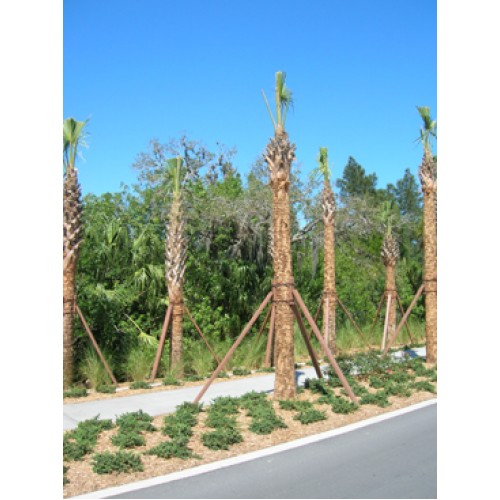Sabal Palms For Sale
 Sabal is the largest gathering of hardy palms available today. The
family has 15-16 species and seven are native toward the southern US
including S. mexicana, S. etonia, S. miamiensis, S. minor var.
louisiana, Sabal minor, S. x texensis, and S. palmetto. Sabal palms like
sand superior to clay, although they will develop in amended clay soils
Sabal is the largest gathering of hardy palms available today. The
family has 15-16 species and seven are native toward the southern US
including S. mexicana, S. etonia, S. miamiensis, S. minor var.
louisiana, Sabal minor, S. x texensis, and S. palmetto. Sabal palms like
sand superior to clay, although they will develop in amended clay soils
Sabal palmetto - Florida's State Tree.
Sabal palms tree has curved, fan-shaped, costapalmate leaves with blades 3-4 feet and petioles 3-6 feet. At the point when free of supplement inefficiencies, this palm has around a top canopy, a trunk 10-16 creeps and 40 feet in stature. Branched inflorescences created in spring end months usually reach out past the leaves and has little, fragrant, creamy-white blossoms that attract honey bees. These species produce some black fruits in the late summer. Though these fruits have very little substance, they are regularly devoured by raccoons and different animals that scatter seeds. This species is viewed as cool hardy.
The
super moderate developing Sabal palm is broadly utilized because of its
outrageous hardiness, availability, and minimal effort. Sabal palms
develop much too moderate for commercial generation and are in this
manner harvested from nature. With the exception of Brazil where they
due develop commercially. Because of abuse and shameful application, the
Sabal has obtained a bad rap throughout the years; be that as it may,
it really is hard to beat the outlined beauty and character of a jammed
Sabal palm hammock amidst a foggy pasture amid a southern dawn. Utilized
as a part of the best possible application, these trees still do draw
out the genuine charm of the South.
The Sabal
palm requires a considerable measure of water especially after
transplanting. The Sabal palm has the ability to draw all the water it
needs in through its trunk. Once planted, if there isn't regular
rainfall, the trunks should be wet down daily until established. Because
of these challenges, Sabals are normally sold with the "hurricane cut"
with no head to enable them through the transplant to process.
The
central bud of the Cabbage palm is eatable and known as the heart of
the palm. Hearts of palm are occasionally available entire and new yet
are usually sold cut in pieces and canned. There is a local Swamp
Cabbage Festival consistently that rotates around the heart of the
Cabbage palm.
The Sabal palm is extremely icy
hardy and can be become farther North than most different palms. This
Palm has High Wind Resistance which makes them great for
hurricane-inclined areas. The Sabal palm has a moderate development
rate, however, can grow up to 60 feet tall.
Sabal palms ought to be fertilized three times each year with an 8:2:12:4Mg of which 100% of the K, Mg, and N is in controlled-release shape, the manganese is in sulfate frame and the iron in chelate shape or sulfate. On the off chance that encompassing turf grass and several other ornamental plants are prepared, they ought to be provided with the same type fertilizer.
Out of the blue, you should know sabal palm for sale come smooth, curved, regenerated, or booted.
Call A Quality Plant today and ask us about these Southern Beauties.
